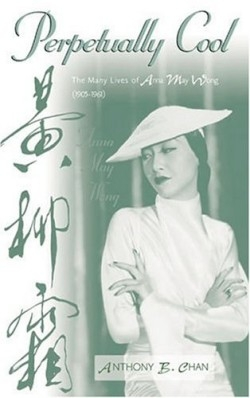Perpetually Cool
The Many Lives of Anna May Wong (1905-1961)
Before there was Lucy Liu there was Anna May Wong, a pioneering Asian American who defied cultural prejudices to become one of the most famous women in the world. In a time when Asian film roles generally went to European Americans in “yellowface,” Wong outshone such costars as Douglas Fairbanks and Marlene Dietrich and provided a role model to Asian Americans everywhere who had never before seen one of their own in the spotlight.
As a child growing up in the world of Chinese laundries in Los Angeles, Anna May Wong (born Wong Liu Tsong) cut classes to watch films being shot on location in the movie capital of the world. When she was just fourteen, she made her film debut as an extra in The Red Lantern (1919), which was at that time the most extravagant Chinese-themed film ever produced. Just five years later, Wong played opposite Douglas Fairbanks in The Thief of Baghdad. Her acclaimed performance as the Mongol spy in this blockbuster made Wong an international star. She went on to play numerous roles in the United States and Europe.
Wong’s career was particularly impressive in that she was able to transition from silent to talking films without losing her audience. Over the course of her stardom, she also worked in the theater, vaudeville, radio, and television; however, despite her scene-stealing acting skills and celestial beauty, Anna May Wong suffered from the typecasting and prejudice that was endemic to the film industry in the early part of the twentieth century. She played rape victims, “dragon ladies,” and other stereotyped images of Chinese women, and lost the role she most desired-O-lan from the film version of The Good Earth-to the Venetian Luise Rainer.
Part Asian American chronicle and part film history, this book displays the author’s expansive knowledge of the history of Chinese American immigration and the cultural milieu that Wong encountered. The book’s first section covers Wong’s growing up and her experiences in the United States and Europe; the second describes her travels in Asia and her emotional and philosophical growth as a mature actress; the third part contains detailed analyses of some of Wong’s most famous films. Each chapter could stand alone as a scholarly discussion of film and cultural theory as well as a biographical account of the actress’s life.
Though in 1934 the Mayfair Mannequin Society of New York proclaimed Anna May Wong to be the “world’s best-dressed woman,” today Wong’s career is little more than a footnote in mainstream film histories. Chan’s book sheds new light on this remarkable woman, who rightfully deserves to be lionized.
Reviewed by
Johanna Massé
Disclosure: This article is not an endorsement, but a review. The publisher of this book provided free copies of the book to have their book reviewed by a professional reviewer. No fee was paid by the publisher for this review. Foreword Reviews only recommends books that we love. Foreword Magazine, Inc. is disclosing this in accordance with the Federal Trade Commission’s 16 CFR, Part 255.

